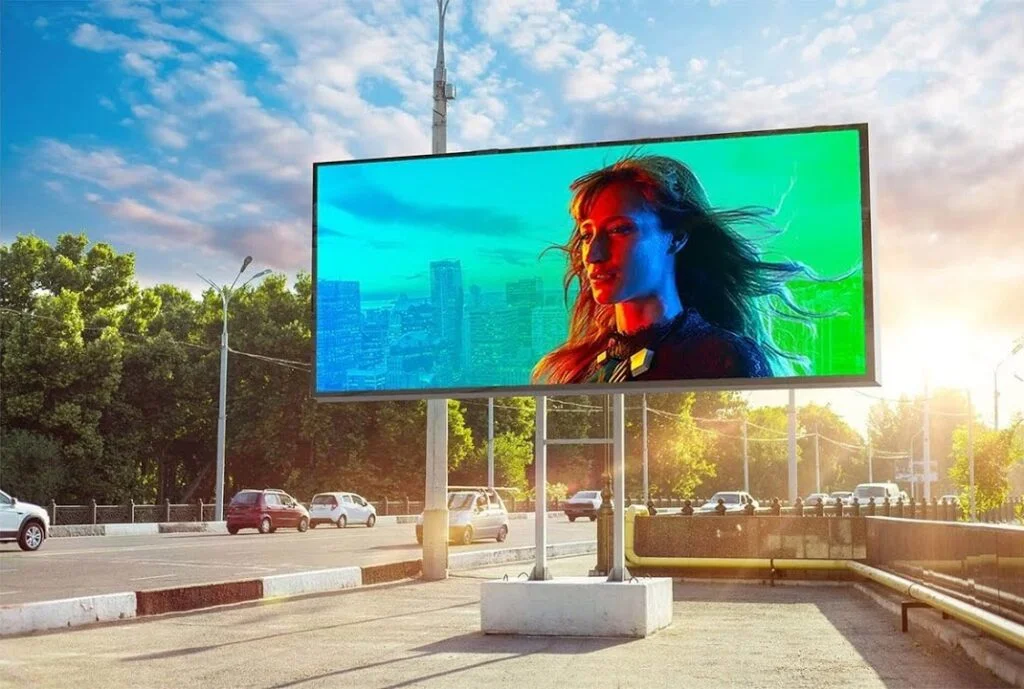How SMD Screens Are Powering Smart Cities in Pakistan | Digital Display Revolution 2025
SMD screens in smart cities of Pakistan enhance urban communication, display real-time information, support public safety, and revolutionize digital advertising, making cities more interactive, efficient, and visually engaging for residents and visitors.
Introduction
The future of urban living is no longer a distant dream — it’s unfolding right now, especially in the rising smart cities of Pakistan. With intelligent infrastructure, connected technology, and data-driven services becoming the norm, one component that’s playing a revolutionary role is the SMD screen. These Smart Multimedia Displays are not just transforming how information is communicated in public spaces but are also at the heart of intelligent, responsive city planning.

What Makes a City Smart?
A smart city isn’t just about tech buzzwords. It's about improving the quality of life through innovation. From intelligent traffic systems to waste management and from digital kiosks to energy-efficient lighting, smart cities in Pakistan are leveraging modern solutions to solve age-old urban problems. In this transformation, SMD screens serve as dynamic visual tools that bridge the gap between citizens and information in real-time.
The Role of SMD Screens in Urban Infrastructure
Smart cities require smarter ways to interact with their population, and SMD screens have emerged as powerful tools for:
-
Real-time traffic updates
-
Public safety announcements
-
Digital advertising
-
Interactive wayfinding
-
Environmental data sharing
These vibrant LED displays are rapidly becoming an urban essential, seamlessly integrated into the city's communication architecture.
Islamabad – A Pioneer in Smart Urban Visuals
As the capital, Islamabad has taken the lead with intelligent urban design. You’ll see SMD screens in islamabad strategically installed in commercial hubs, traffic intersections, and even parks. Whether it's weather alerts, civic instructions, or interactive city maps, these screens offer crisp, real-time data that serves both locals and tourists.
Lahore – Marrying Heritage with High-Tech
Lahore, with its deep historical roots, is now also embracing a tech-first approach. SMD screens in lahore installed across the city broadcast cultural promos, event schedules, and commercial advertisements. They’re also being used to stream educational content in public libraries and information kiosks.
Karachi – Managing Chaos with Clarity
In a city as sprawling and bustling as Karachi, communication is key. From airport terminals to underpasses and flyovers, SMD screens in karachi help maintain order and share relevant news, especially in high-density areas. Their role in emergency alert systems cannot be overstated.
Smart Traffic Management with SMD Displays
Traffic is the heartbeat of any city—and when it clogs, the whole system suffers. SMD screens have become instrumental in:
-
Guiding routes during congestions
-
Displaying alternate roads
-
Sharing accident alerts
-
Providing ETA info for public transport
The result? Reduced frustration, improved road safety, and smarter commutes.
Public Safety and Emergency Communication
In the case of emergencies like natural disasters, power outages, or even terrorist threats, SMD screens offer unmatched efficiency. Unlike traditional media, these screens provide instant, hyper-localized alerts visible to pedestrians and drivers alike. It’s proactive crisis management at its best.
Boosting Tourism with Interactive SMDs
Smart cities are also smart about tourism. Imagine walking through the streets of Murree or Hunza and coming across a sleek, interactive SMD screen showing historical facts, weather updates, restaurant reviews, or scenic trails. This isn’t fantasy—it’s already in motion in many of Pakistan’s developing tourism spots.
Digital Advertising Reimagined
Gone are the days of peeling posters and static billboards. With SMD screens:
-
Advertisements are dynamic and eye-catching.
-
Businesses can update content instantly.
-
Targeted ads can run based on time or location.
-
Engagement metrics can be analyzed in real-time.
This evolution is particularly beneficial for SMEs looking to gain visibility in urban centers.
Education and Awareness Campaigns
SMD screens are also being tapped for social good. Health advisories, government campaigns, public service messages—all can be broadcast across different sectors of the city. Whether it’s COVID updates or polio drives, SMDs make sure the message reaches the masses clearly and quickly.
Environmental Monitoring with SMD Screens
Some smart cities are taking it a step further by integrating air quality indexes, UV levels, and pollution reports into public-facing SMD displays. This real-time environmental information empowers citizens to make informed decisions about their outdoor activities.
Energy Efficiency of Modern SMD Screens
One major concern often raised is power consumption. However, modern SMD screens are built using energy-saving technologies. Many are solar-powered or connected to smart grids, reducing their carbon footprint while delivering 24/7 performance.
Challenges in Implementing SMD Screens in Smart Cities
Despite their advantages, a few hurdles exist:
-
High initial costs
-
Maintenance and weather resistance
-
Power outages in certain areas
-
Content regulation and privacy concerns
However, with growing governmental and private sector support, these challenges are slowly being addressed through better planning and tech innovation.
Future Prospects of SMD Screens in Pakistan
Looking ahead, the potential is immense. We’re talking about:
-
AI-powered SMD displays
-
Gesture-controlled interfaces
-
Voice recognition integration
-
Localized content using geo-targeting
As 5G becomes more widespread in Pakistan, SMD screens will evolve into interactive urban assistants, capable of doing much more than just display.
Conclusion
SMD screens are no longer just flashy urban decor—they're integral to the smart city ecosystem. In Pakistan, where cities are evolving rapidly to meet the demands of modern life, these digital displays are becoming crucial tools for communication, safety, education, and economic growth. The journey is only just beginning, but one thing is clear: the screen is mightier than the signboard.
FAQs
Q1: Are SMD screens expensive to maintain in smart cities?
Yes, but newer models are increasingly energy-efficient and designed for durability, reducing long-term costs.
Q2: How do SMD screens contribute to public safety?
They deliver real-time alerts for emergencies like accidents, weather updates, and public service announcements, helping people stay informed.
Q3: Can SMD screens be interactive?
Absolutely! Advanced models offer touchscreen capabilities, gesture control, and even voice response systems.
Q4: Are these screens environmentally friendly?
Modern SMD displays use energy-efficient LEDs and are often integrated with solar power, making them more sustainable.
Q5: Where else can SMD screens be used apart from roads and billboards?
They're ideal for malls, parks, public transport terminals, government offices, tourist spots, and educational institutions.






